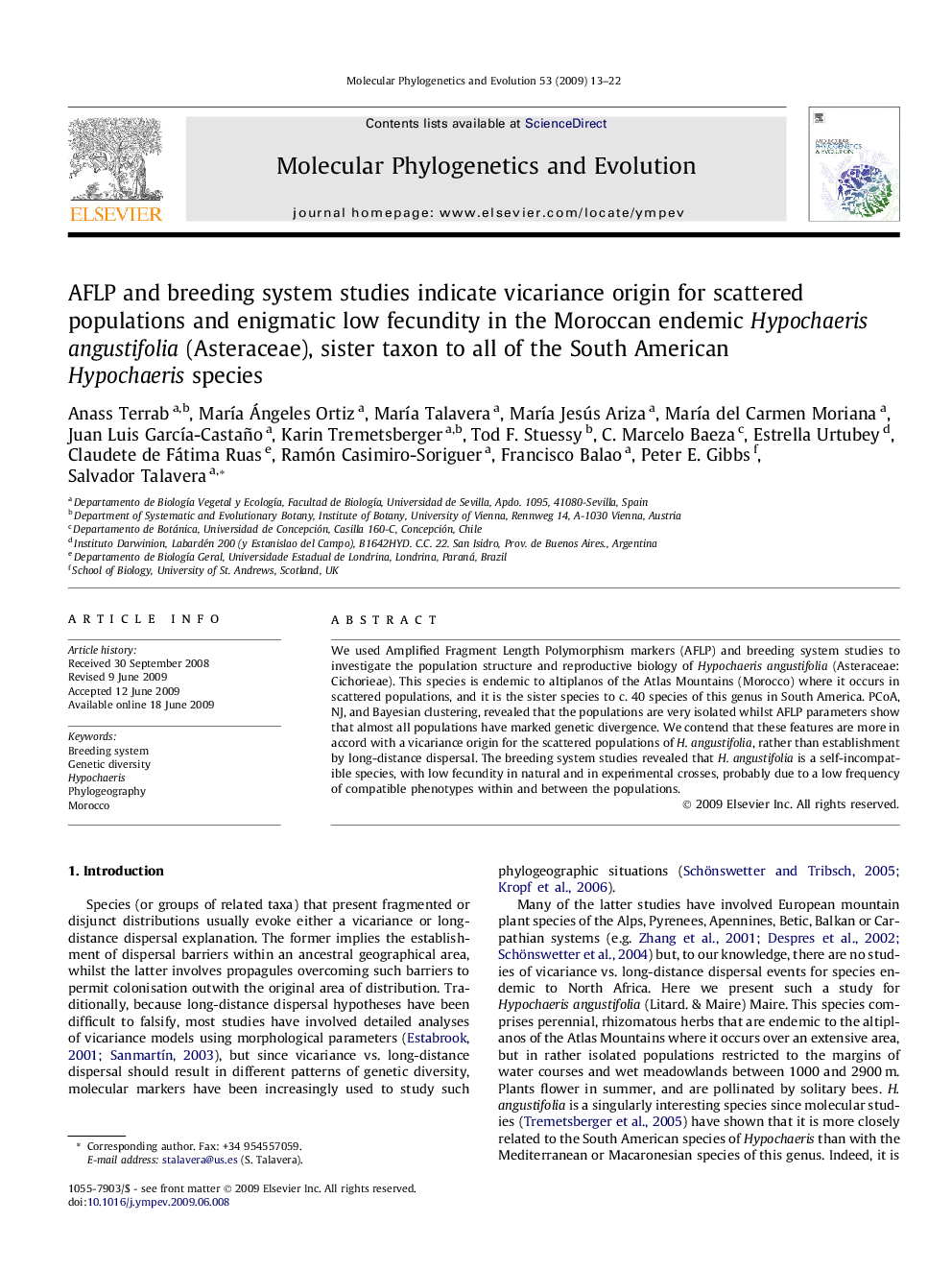| Article ID | Journal | Published Year | Pages | File Type |
|---|---|---|---|---|
| 2834290 | Molecular Phylogenetics and Evolution | 2009 | 10 Pages |
We used Amplified Fragment Length Polymorphism markers (AFLP) and breeding system studies to investigate the population structure and reproductive biology of Hypochaeris angustifolia (Asteraceae: Cichorieae). This species is endemic to altiplanos of the Atlas Mountains (Morocco) where it occurs in scattered populations, and it is the sister species to c. 40 species of this genus in South America. PCoA, NJ, and Bayesian clustering, revealed that the populations are very isolated whilst AFLP parameters show that almost all populations have marked genetic divergence. We contend that these features are more in accord with a vicariance origin for the scattered populations of H. angustifolia, rather than establishment by long-distance dispersal. The breeding system studies revealed that H. angustifolia is a self-incompatible species, with low fecundity in natural and in experimental crosses, probably due to a low frequency of compatible phenotypes within and between the populations.
